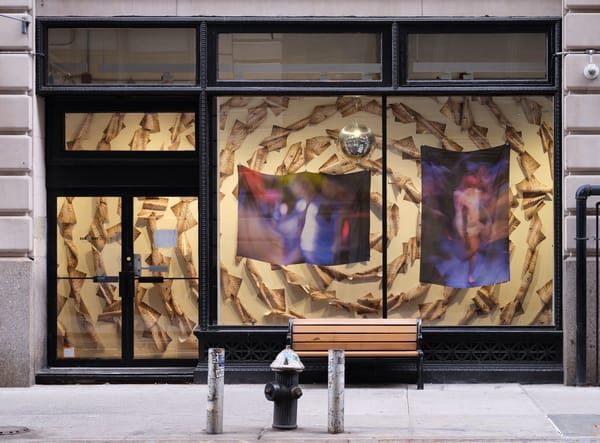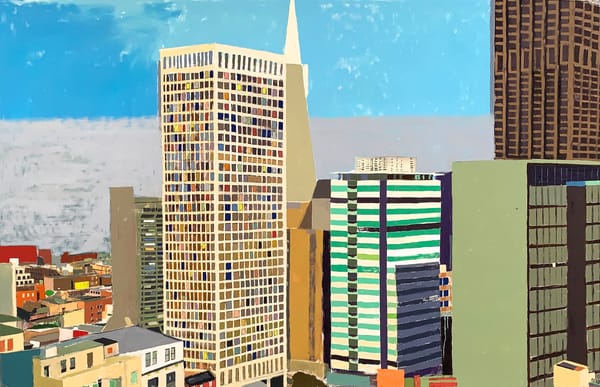Melissa Meyer’s Lush Urban Glyphs
Working with line and color for more than two decades, Meyer has shown that reductive painting need not squeeze out improvisation.
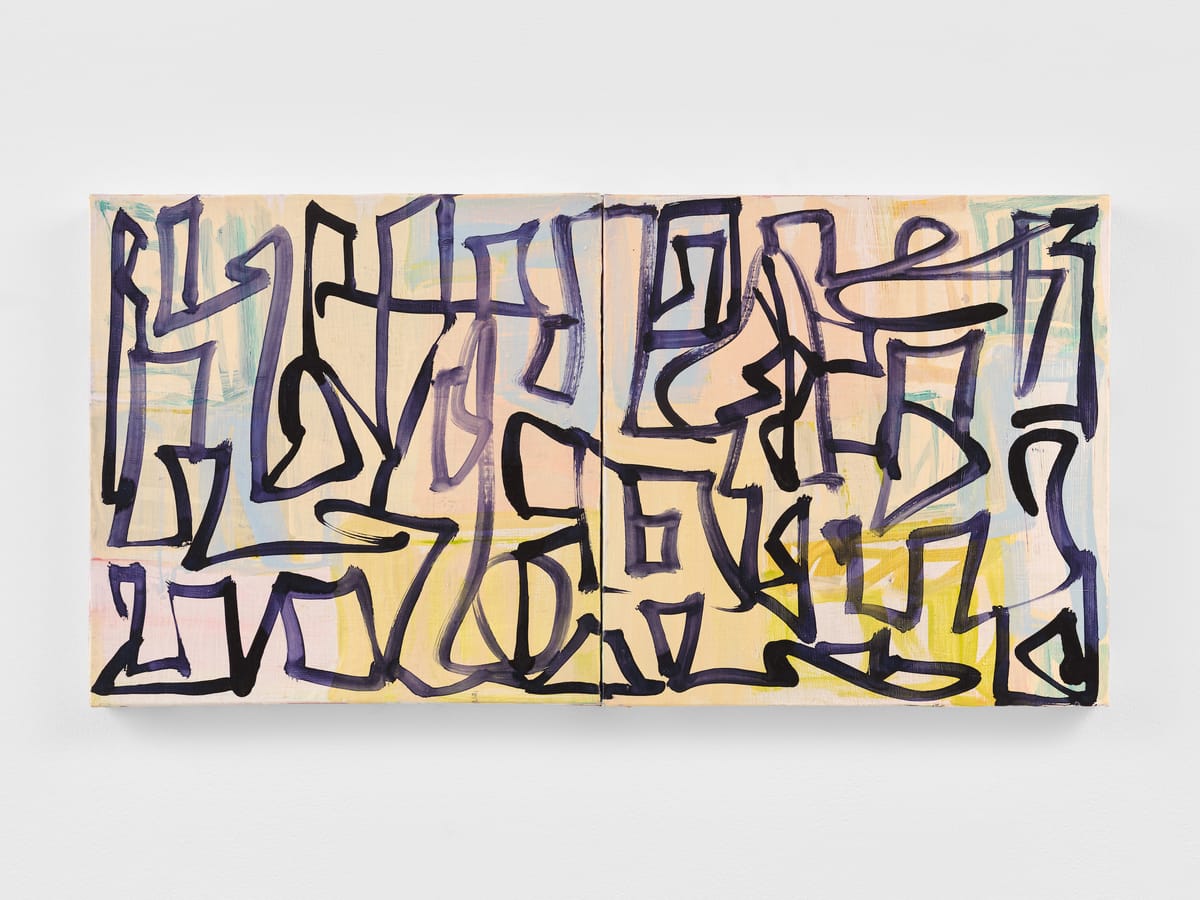
I have been following Melissa Meyer’s career as closely as possible since I first wrote about her work in 2009. Admittedly, I was a latecomer: Meyer began exhibiting in the early 1970s, when the art world was dominated by Pop Art, Color Field painting, and Minimalism, all of which were regarded as reactions against Abstract Expressionism, particularly its use of the hand and autobiographical gesture. Then again, Meyer could also be considered untimely, as she never felt compelled to reject drawing in paint. From the mid-1970s until 2001, she made looping, elegant brushstrokes of evenly dispersed paint across large surfaces. What I think many critics have missed in writing about these works is the level of control required of the artist to arrive at her lush, graceful surfaces. This was not associated with Abstract Expressionism, whose effect the poet James Schuyler described as: “the floods of paint in whose crashing surf we all scramble.”
Between 2001 and 2003, Meyer decided to change her practice without giving up her AbEx roots. She began working in watercolor, the antithesis of oil paint; this led her to thin her oil paint, giving it a liquidity that had not been part of her previous work. At the same time, as in her earlier work, the mark is paramount, rather than the drip, which has never been part of her vocabulary.
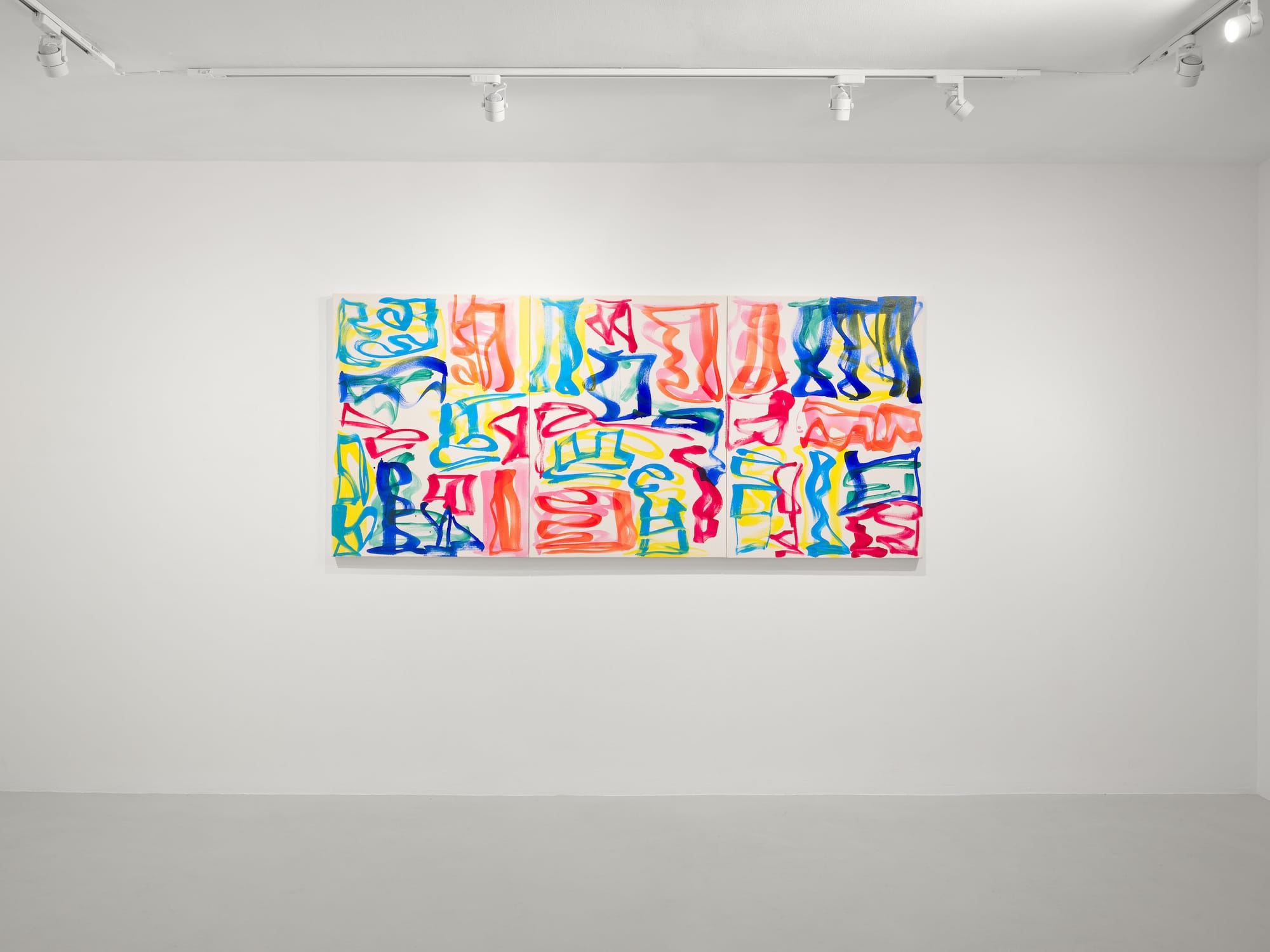
Meyer also decided to break up the field across which her brushstrokes smoothly unfurled, and incorporate Photoshop into her compositions; these changes were prompted by two commissions for large public works in Japan. Disjuncture replaced lyricism. I admired her decision to step out of her comfort zone, something few artists do.
For those who are not familiar with Meyer’s art, Throughlines, her debut exhibition at Olympia gallery, which includes 10 paintings and one of her sketchbooks, is a good place to start. The show covers the past two decades (2003 to 2024), when she changed her practice and thus elevated her work to a place that is recognizably hers.
In contrast to her earlier paintings, with their dense brushstrokes, Meyer’s art of the past 20 years consists of thinly painted abstract glyphs. They are asemic signs, evoking both a language with no semantic meaning and indecipherable urban graffiti. The triptych “Springtime Trio” (2024) is composed of layers of glyphs on a white ground — first yellow, then blue and red, and finally a different intensity of red or blue placed over a similar color. The interrelationship between the layers — blue upon yellow and red upon red — does not feel programmatic.
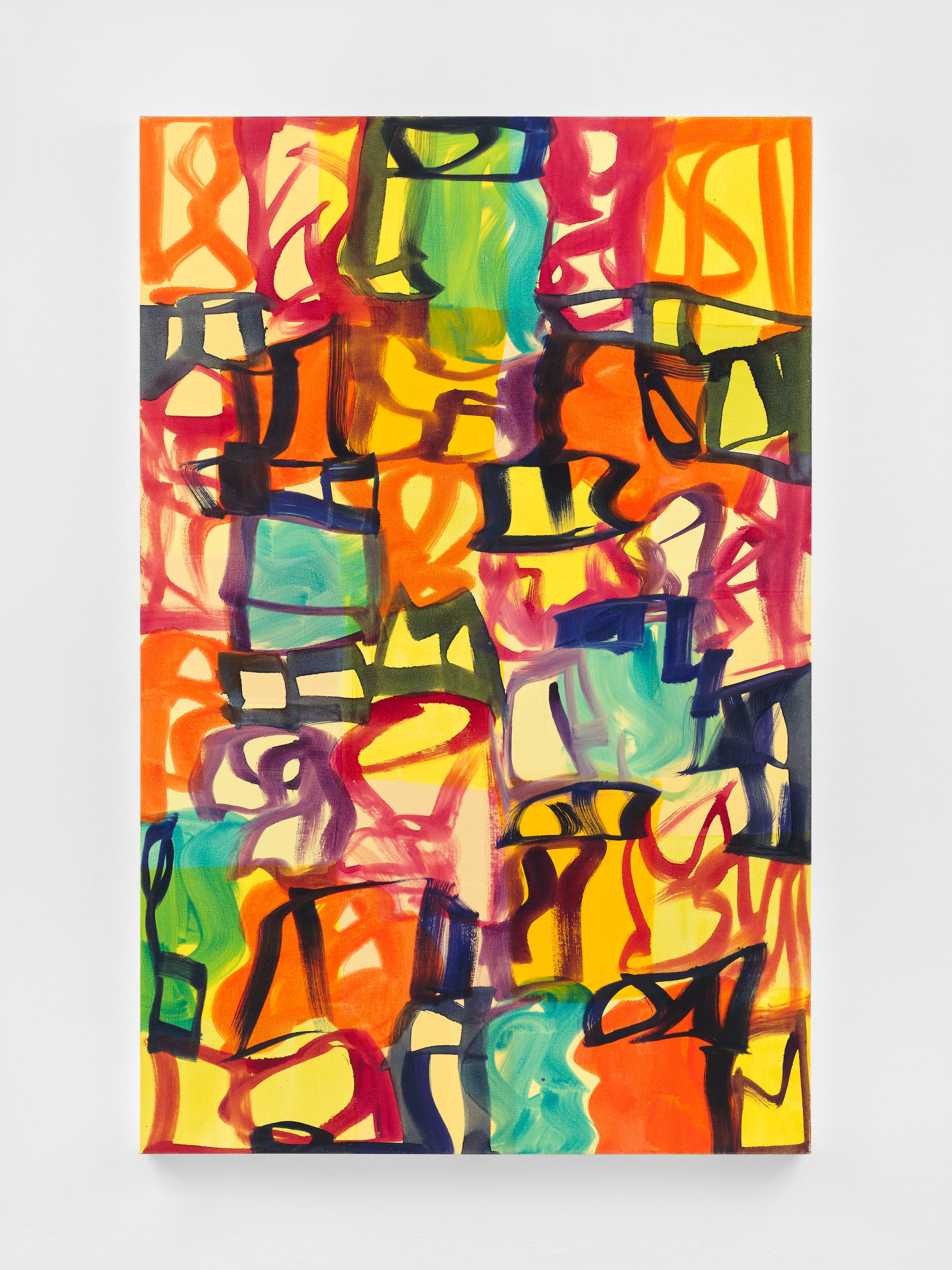
Another change that has taken place in Meyer’s work is in her cultivation of light. There is a luminosity to the color, a glow to the stacked asemic signs enhanced by the patchwork yellow ground in “Lizzie Hazeldean” (2010). The painting’s title refers to a short story by Edith Wharton, “New Year’s Day” (published 1890), about a married woman who had a scandalous affair with a wealthy bachelor. Wharton was examining the social expectations and obstacles that prevented a woman from gaining her independence at that time. With its different reds, oranges, and yellows, turquoises, dark blues, and blacks, Meyer’s palette alludes to the fire that drives the occupants out of a less-than-fashionable hotel, including the illicit lovers. The work also points to the question: How does a woman artist make her way in a world dominated by male codes?
This has preoccupied the artist throughout her career, and has extended to her consideration of other artists, including those as different as Grace Hartigan and Helen Frankenthaler. Meyer’s use of thinned oil paint shares something with Frankenthaler’s stain paintings, yet pushes against them by emphasizing hand drawing and rejecting drips and any sign of accident or chance, while her 2023 exhibition Grace and Me at Contemporary Art Matters responded to the work of Grace Hartigan. The paintings in this exhibition were inspired by an invitation to respond to two Hartigan paintings in the Rockefeller Collection for the show Inspired Encounters: Women Artists and the Legacies of Modern Art at the David Rockefeller Creative Arts Center (October 1, 2022–March 19, 2023). These exhibitions are important because they suggest an unsentimental history of influence and change that diverges from popular art historical narratives that focus on rupture and heroic struggles to overthrow or jettison the past. Working with line and color for more than two decades, Meyer has shown that reductive painting need not squeeze out improvisation. For this alone, she deserves a long overdue survey.
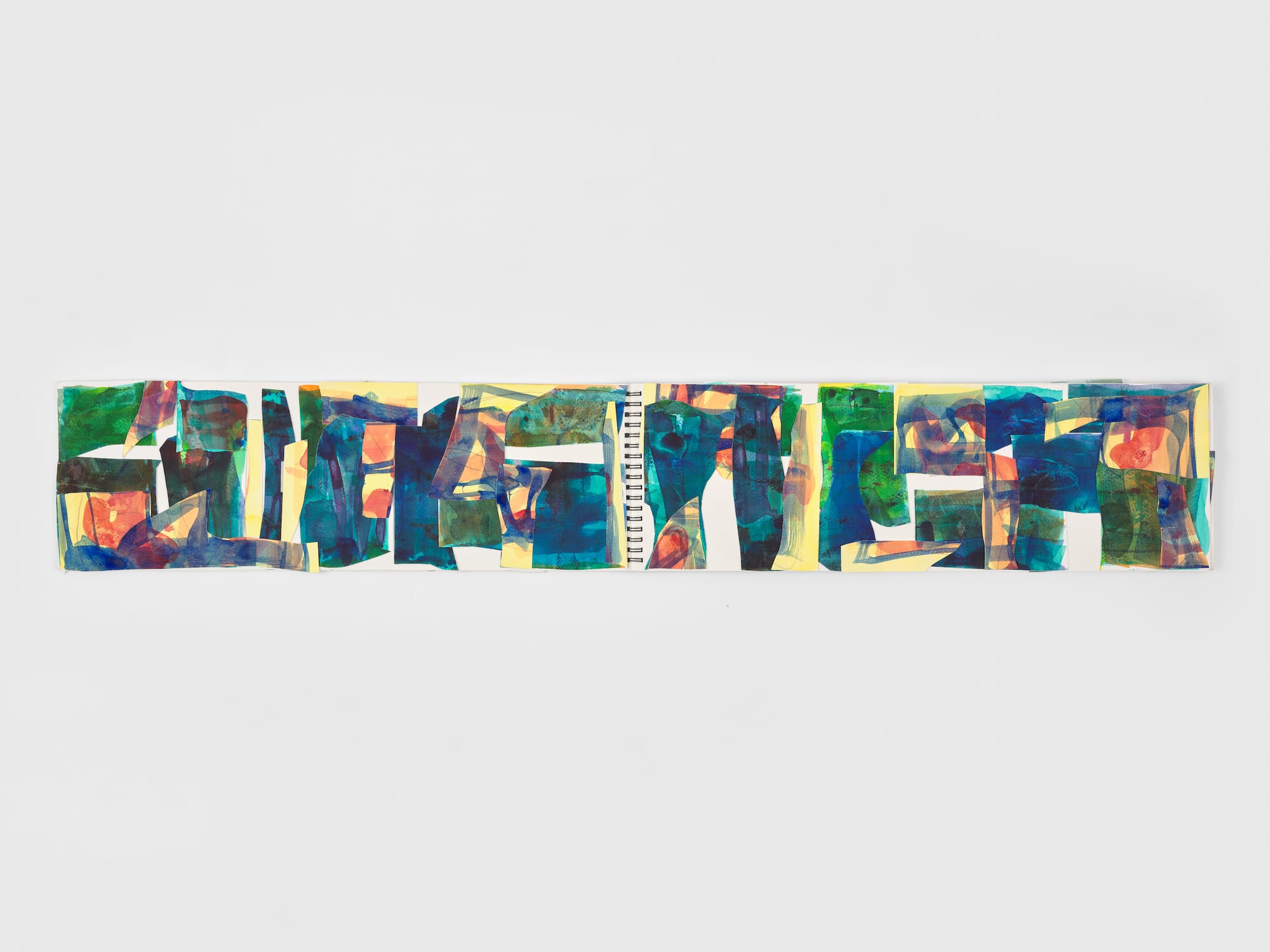
Melissa Meyer: Throughlines continues at Olympia (41 Orchard Street, Lower East Side, Manhattan) through June 29. The exhibition was organized by the gallery.

